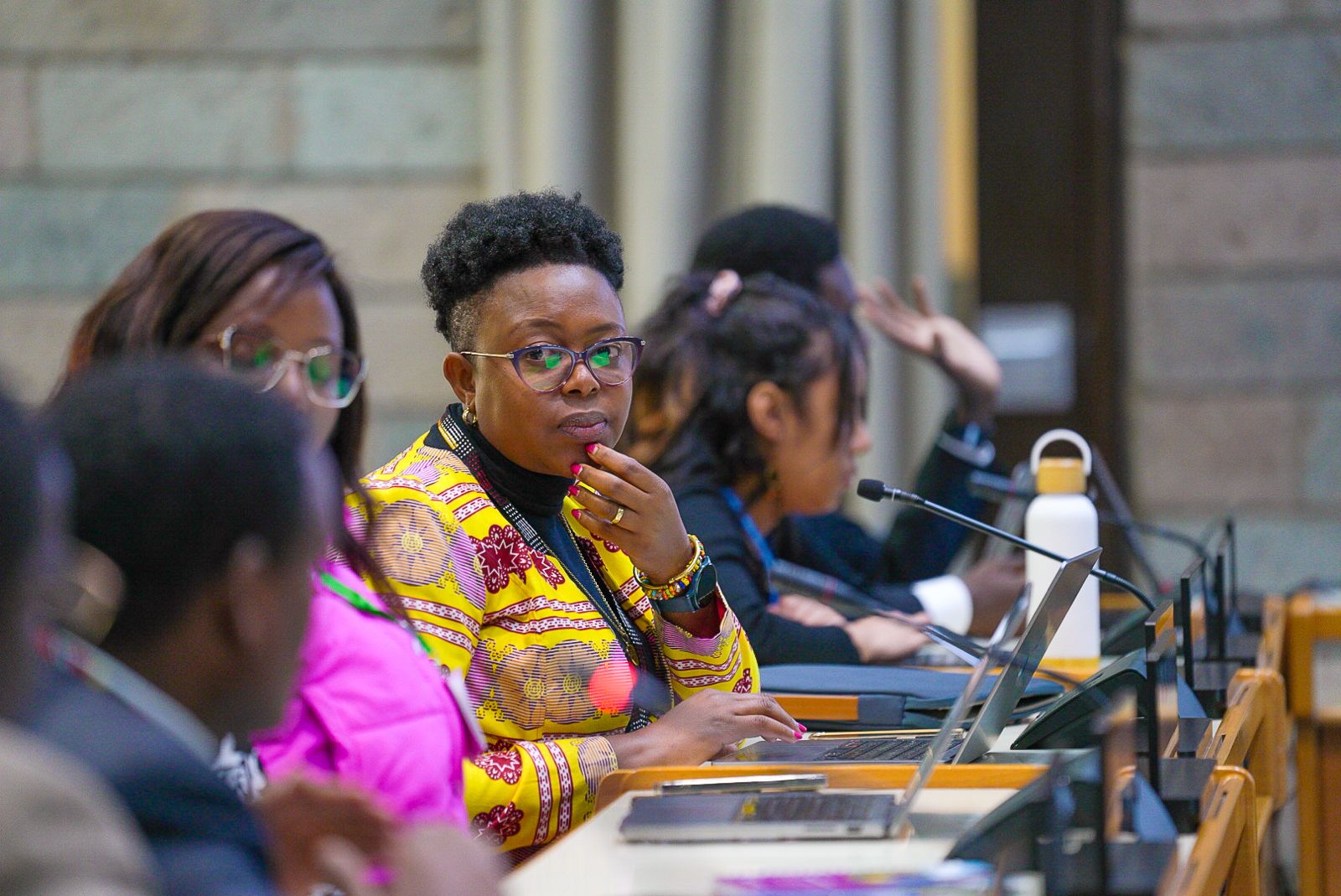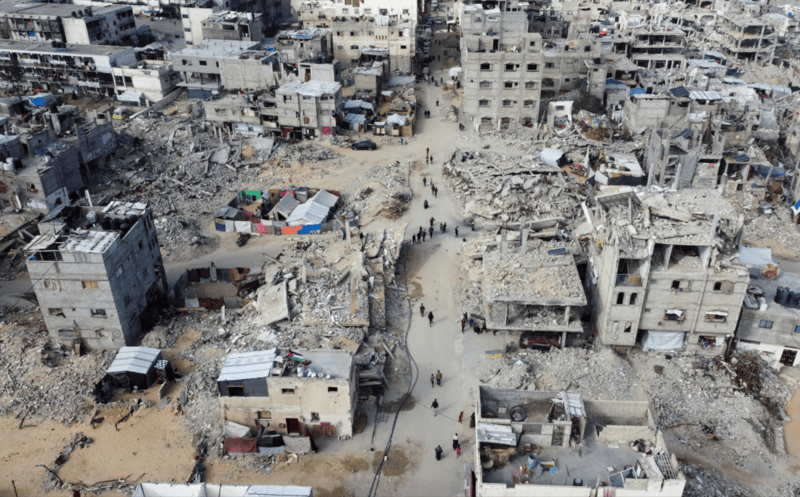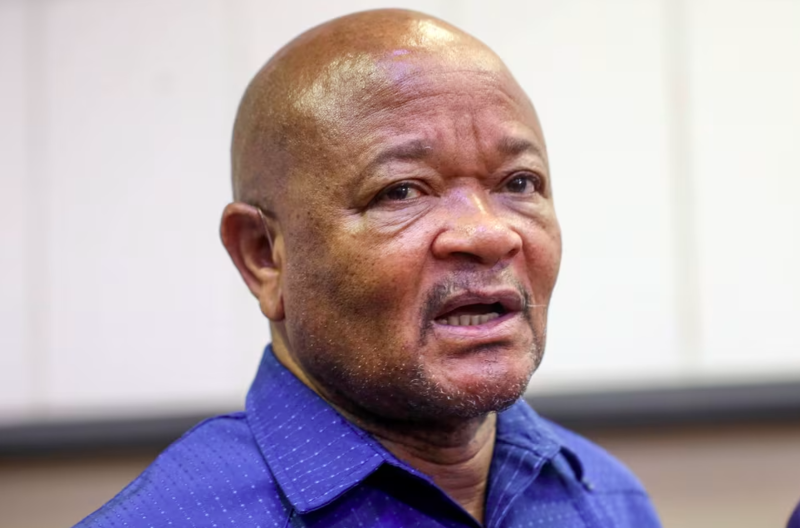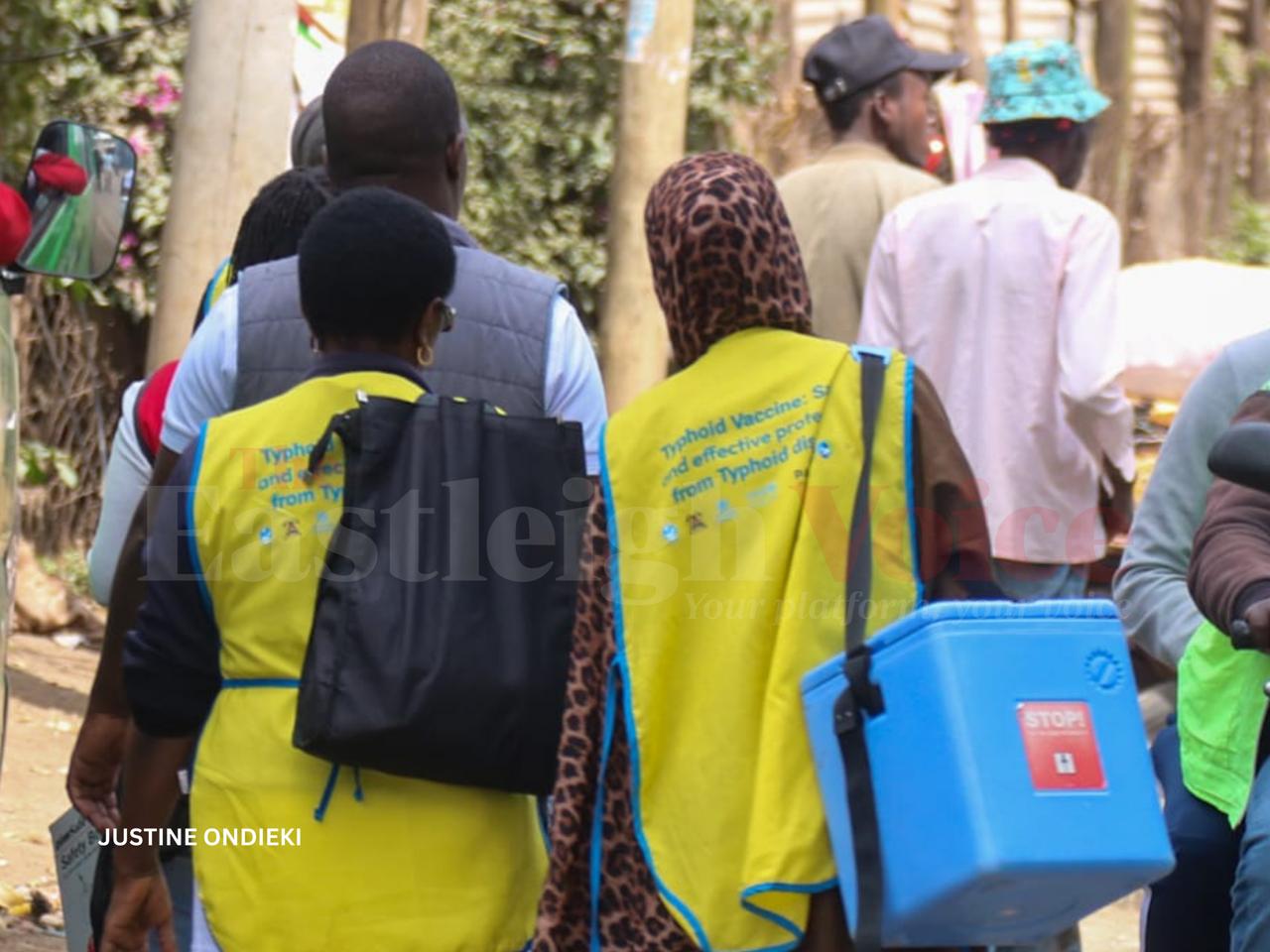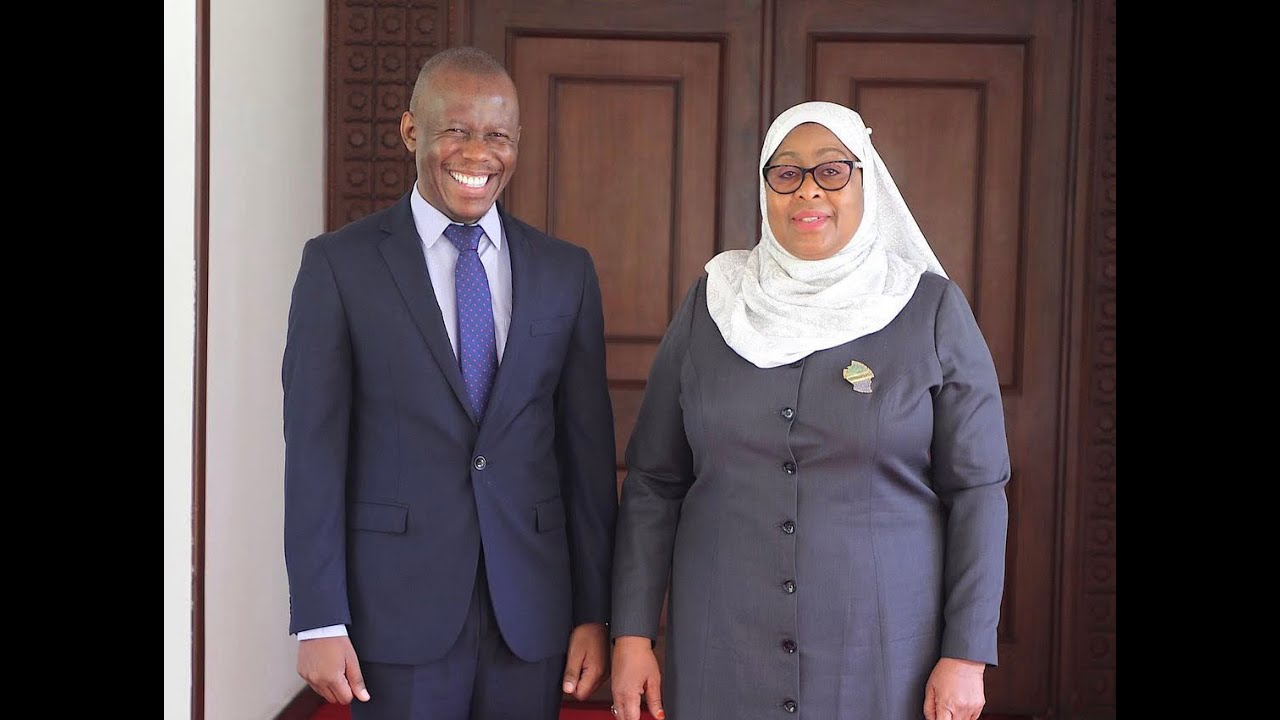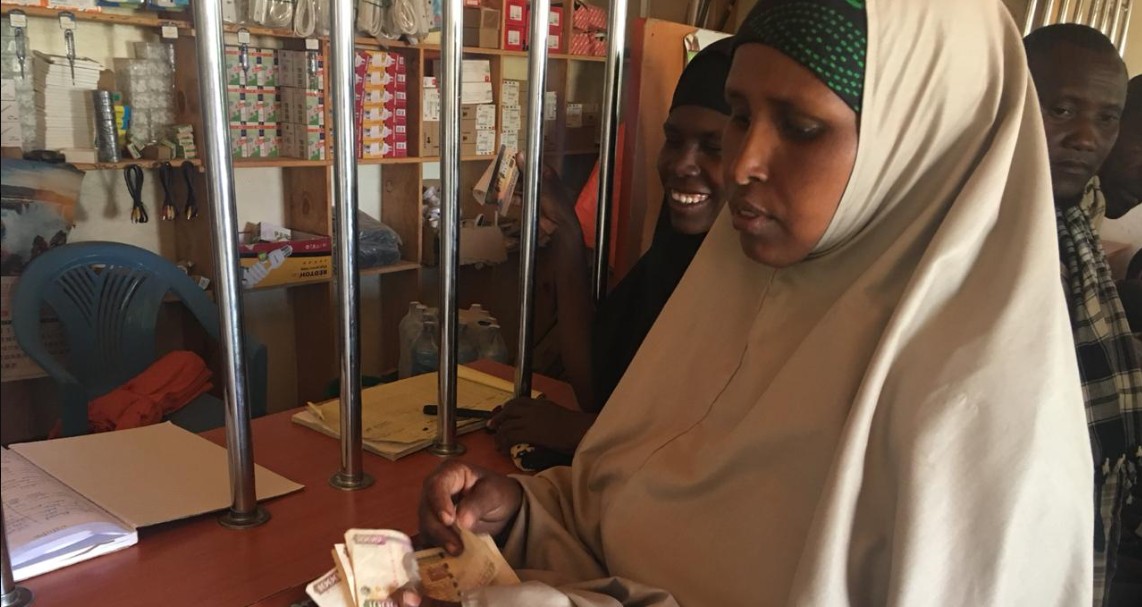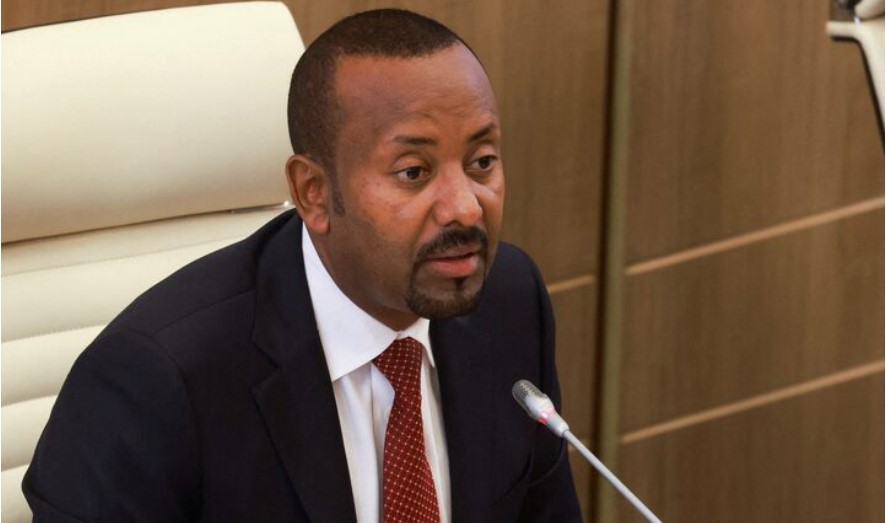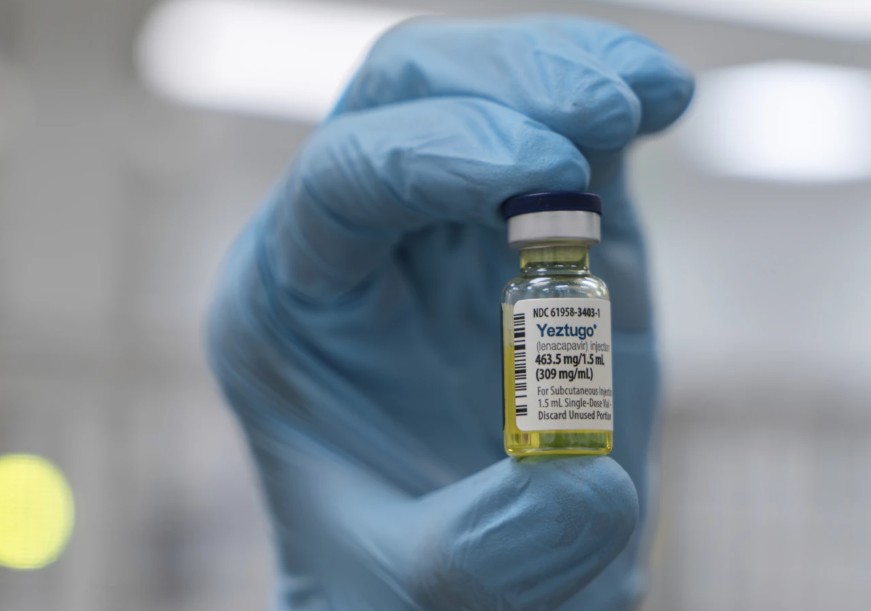As Gaza suffers, hunger watchdog refrains from using the F word: famine
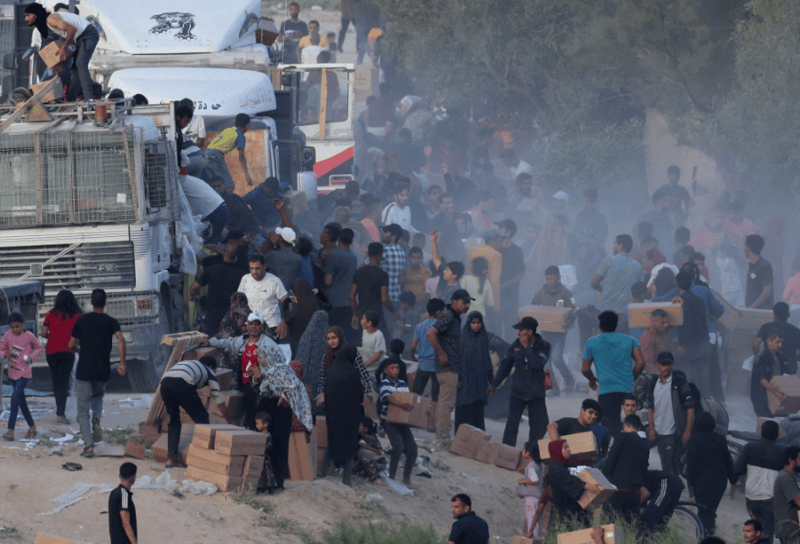
Many aid workers and doctors say famine has taken hold in Gaza. But amid Israel’s military assault and curbs on movement, the world’s hunger monitor has struggled to access key data to determine whether conditions constitute a famine. Some experts now wonder: Is it time to rethink how a famine is defined?
Five times in the course of the past year, the world’s leading hunger monitor warned that Gaza could be teetering on the precipice of famine. Each time, the watchdog stopped short of concluding one was under way.
Gregory Shay, a retired pediatric pulmonologist from California, spent October treating children in Gaza, and to him it looked like famine was gripping the territory.
More To Read
- Israeli army using Chinese drones to bomb civilians in Gaza - report
- Six children killed in Israeli strike while queuing for water in Gaza
- Letter from Mideast: "I fear not death, but dying unseen" - Gaza journalists as witnesses, targets
- 613 killed near Gaza aid outlets as hospital is overwhelmed by injured patients- UN
- Death toll from Israel strike on Gaza cafe rises to 34: sources
- 700,000 refugees in Kenya face severe hunger crisis after aid cuts
Shay worked at Nasser Hospital in the southern Gaza city of Khan Younis. Most of the children he treated subsisted on bread and rice, recalled Shay, a volunteer with the U.S.-based non-profit organisation MedGlobal. Without vegetables, fruit or meat, he said, the children lacked the vitamins or minerals needed to stave off disease.
Most days, Shay said he treated on average 40 new patients who were admitted to the hospital. Many had severe cases of pneumonia, and several others suffered from meningitis, an illness that can kill in hours. Newborns were often small for their age, he said. Some had birth defects or suffered from neonatal sepsis, a blood infection that’s a leading cause of infant mortality.
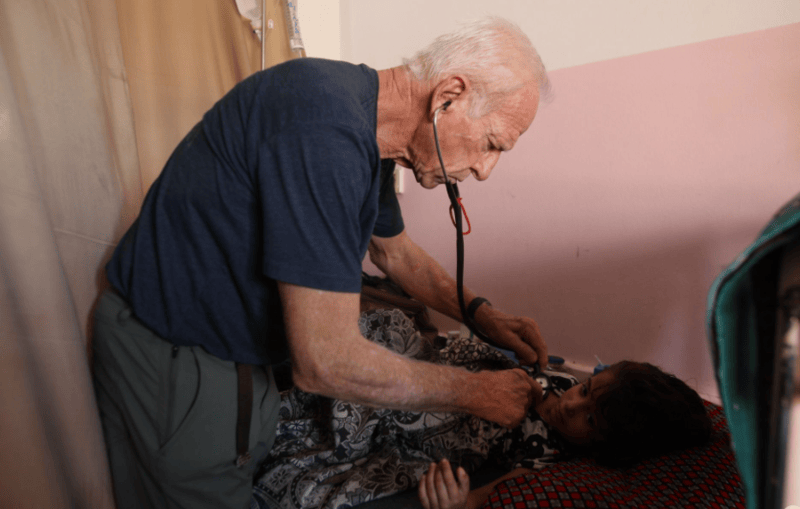 Dr. Gregory Shay, a retired pediatric pulmonologist and volunteer with aid group MedGlobal, treated on average 40 new patients a day during his month-long stint in October in the southern Gaza city of Khan Younis. Via MedGlobal
Dr. Gregory Shay, a retired pediatric pulmonologist and volunteer with aid group MedGlobal, treated on average 40 new patients a day during his month-long stint in October in the southern Gaza city of Khan Younis. Via MedGlobal
“I’ve never seen the kind and number of infections that I saw in Gaza,” said Shay, who has made 35 medical aid trips during the past decade. “You just look at these kids and you know that it’s a famine.”
Many food-security experts, aid workers and doctors say famine took hold in Gaza many months ago. But amid relentless Israeli bombing and restrictions on movement, analysts with the world’s main hunger monitor, the Integrated Food Security Phase Classification system (IPC), have struggled to get access to key data on acute malnutrition levels and deaths unrelated to violence. These metrics are vital for the IPC to determine if starvation has technically risen to the level of a famine.
IPC reports use a one-to-five scale to rank areas for acute food insecurity. It slides from minimal to stressed, crisis, emergency and famine. Gaza has consistently approached, but never technically reached, famine level. Most recently, the IPC’s Famine Review Committee has warned that famine is imminent in areas of northern Gaza.
Some experts want the IPC to lower its threshold for determining famine in conflict-ridden areas and expand the types of data it uses. In Ethiopia, Yemen and Sudan, Reuters found that governments or rebels have blocked or falsified the flow of data to the IPC or tried to quash its findings.
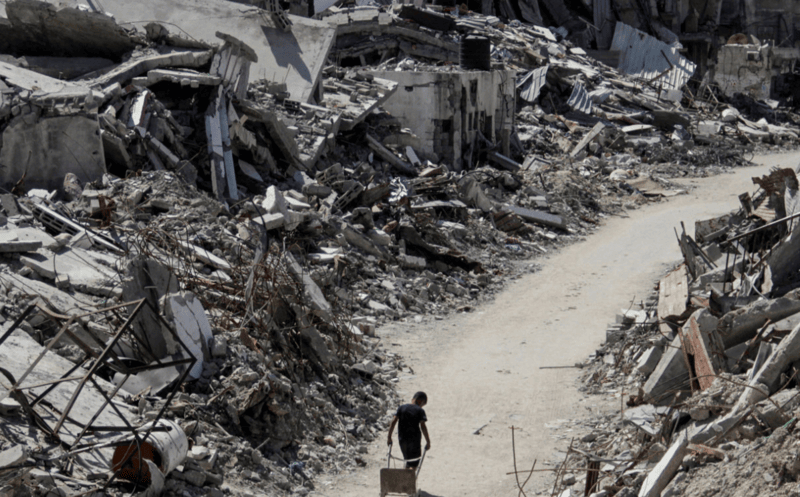 The destruction from relentless bombing by Israeli forces has displaced at least 1.9 million people in Gaza. REUTERS/Mohammed Salem
The destruction from relentless bombing by Israeli forces has displaced at least 1.9 million people in Gaza. REUTERS/Mohammed Salem
The seeming disconnect between what’s happening on the ground and how the IPC characterises conditions in Gaza has given rise to many questions: Does the hunger monitor need a more flexible definition of famine? How would a famine finding make a practical or legal difference? And how might the IPC be able to overcome limitations in gathering and evaluating data?
“If we can’t access critical information, confirming a famine becomes impossible – and so does saving lives,” said Dalmar Ainashe, a food-security analyst with relief group CARE. For 10 years, Ainashe served as a member of the IPC Technical Advisory Group, which provides expert advice to IPC’s leadership. He also has recounted how he survived a famine as a child in his native Somalia.
“In the chaos of conflict, clinging to unattainable quantitative thresholds isn’t just unrealistic,” Ainashe told Reuters. “It’s a fatal oversight that risks abandoning entire populations to suffer and die in silence.”
Jose Lopez, the IPC’s global programme manager, said the hunger monitor relies on various types of evidence to “ensure that IPC analysis findings are robust and thus credible.”
Regardless, a famine finding isn’t a silver bullet. As Reuters reported, limited aid has reached Zamzam, a camp in Sudan for displaced people that the IPC deemed to be in famine. Moreover, if aid only flows when a famine is found, it’s too late: Food and medical relief need to start arriving much earlier, long before people start dying.
 Desperate Palestinians gather to buy bread in October from a bakery in Khan Younis, a city in southern Gaza. REUTERS/Mohammed Salem
Desperate Palestinians gather to buy bread in October from a bakery in Khan Younis, a city in southern Gaza. REUTERS/Mohammed Salem
To prevent deaths, governments and others who can help address hunger need “to act before a famine is confirmed or even projected,” the IPC’s Lopez said. “Simply changing the terminology is unlikely to address the issue.”
Even so, internal IPC documents reviewed by Reuters show that the hunger watchdog is considering modifying its famine definition. Among options mentioned in the September documents: lowering the mortality threshold or examining mortality trends rather than simply using a hard-and-fast threshold.
Such changes will take time, Lopez cautioned. “This work requires considerable collaborative effort and studies,” he told Reuters.
‘Historical Judgment’
The debate over whether and how to update the IPC’s approach to famine comes as hunger continues to spread around the world, especially in war-torn areas such as Myanmar and Sudan, where people have resorted to eating leaves. In 2023, almost 282 million people faced what the IPC considers high levels of acute food insecurity. More than 36 million children under the age of 5 were acutely malnourished.
In Gaza, children were already dying of malnutrition-related causes in December last year, according to local medical staff.
That’s what Mona Abdel Atti says she witnessed when she began caring for malnourished patients as a midwife at Nasser Hospital.
One day last December, two infants were admitted to the hospital – a 5-month-old girl, and an 8-month-old boy, she recalled. Both were breathing rapidly and showing clear signs of malnutrition and dehydration. Their weights were critically low for their ages, their stomachs bloated and their skin dry, she said.
The medical staff quickly administered plasma and blood transfusions and placed them on ventilators, Abdel Atti said, but their bodies were too weak. They died an hour apart.
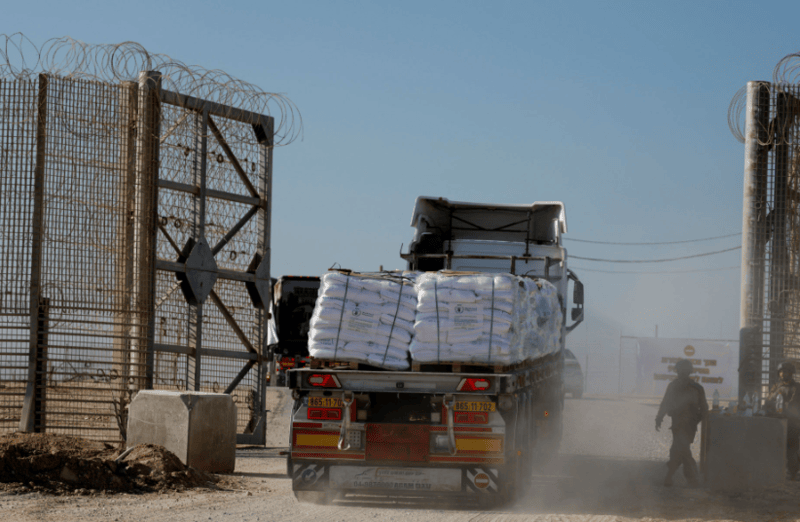 Trucks carrying humanitarian aid destined for Gaza don’t necessarily make it to the neediest, and they sometimes are looted shortly after they cross the border. REUTERS/Amir Cohen
Trucks carrying humanitarian aid destined for Gaza don’t necessarily make it to the neediest, and they sometimes are looted shortly after they cross the border. REUTERS/Amir Cohen
For Michael Fakhri, the U.N. special rapporteur on the right to food, it became clear that famine had taken hold in Gaza months later, when more children began dying of malnutrition-related causes. Along with other U.N. experts, he declared in July that famine had spread throughout Gaza. “Parents and communities feed their children before they feed themselves,” Fakhri told Reuters, “so when a child dies it tells us that social structures are collapsing and an entire people is under attack.”
In addition to other thresholds, the IPC currently says famine occurs when two of every 10,000 people or four of every 10,000 children under 5 die each day “due to outright starvation or to the interaction of malnutrition and disease.”
But little is known about how many people in Gaza have died of causes unrelated to violence since the war began.
In late October, a Gaza health ministry official shared with Reuters a list of 38 people whose deaths were attributed to malnutrition or dehydration. A majority were children, including infants under the age of 1. The official said he believes the tally substantially undercounts actual deaths.
Many families bury their dead without reporting the death because of the cost, dangers and difficulties of moving around in Gaza, the official said. The official added that the ministry has little information about recent malnutrition cases and deaths in besieged areas in northern Gaza, where hunger levels are believed to be highest.
Supplies into Gaza fluctuate dramatically
Israeli authorities inspect humanitarian and commercial truck shipments at border crossings. Due to Israeli inspection rules, trucks are often required to be only partially full, aid agencies say, and some trucks are turned away if they carry supplies that authorities deem to have both a civilian and military use.
Food has spoiled while waiting to cross. Gunfire and bombardments prevent some aid from being distributed. Looting by armed gangs is also common.
For these reasons, data that tracks the number of truckloads of aid entering Gaza overestimates food supply in the enclave, according to humanitarian organizations. The data, which has been collected by the Israeli government since October 2023, also does not detail where in Gaza the relief ends up, or specifically what’s in the trucks. That makes it hard to assess whether nutritious foods reach the hungriest.
Relief falls far short of needs
About 2,485 supply trucks, on average, entered Gaza each week prior to the war, according to a Reuters analysis of data recorded by the U.N. In light of the war's destruction of agriculture, warehouses, stores and bakeries, aid agencies have called for Israel to allow roughly 3,000 trucks into Gaza each week to prevent a humanitarian crisis.
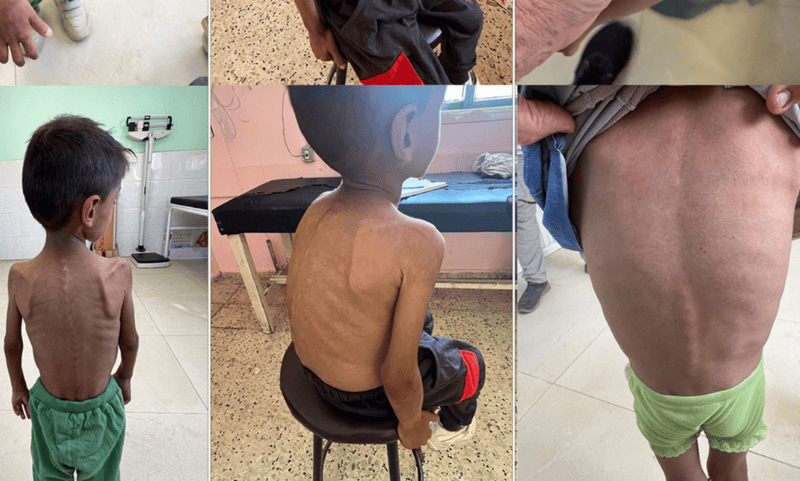 Palestinan children treated and photographed by Dr. Gregory Shay, a volunteer with MedGlobal who spent October treating patients at Nasser Hospital in southern Gaza. HANDOUT/Gregory Shay
Palestinan children treated and photographed by Dr. Gregory Shay, a volunteer with MedGlobal who spent October treating patients at Nasser Hospital in southern Gaza. HANDOUT/Gregory Shay
In an October 2024 letter, the Biden administration told Israel to allow the equivalent of 2,450 trucks into Gaza each week within 30 days or face potential restrictions on military support.
Relief has not reached these thresholds. Just 969 supply trucks have entered Gaza weekly, on average, since war broke out, a Reuters analysis of Israeli government data shows.
Trucks increase amid outside pressure
Drastic drops in supply trucks allowed into Gaza usually accompanied intensive Israeli military operations. A Reuters analysis revealed a pattern: Relief rose when the U.S. or other powerful actors raised concerns about food access. Three examples:
After the October 2023 attack, Israel blocked all goods into Gaza for almost two weeks. Throughout November, the U.N. warned of dire food shortages. On December 21, 2023, the IPC warned of famine risk. Trucks increased from November through January.
Supply trucks fell in February, and northern areas were largely cut off from aid. In mid-March, the IPC projected that famine was “imminent” in northern Gaza. The International Court of Justice ordered Israel to allow in more aid. In early April, the U.S. threatened to restrict military support after an Israeli airstrike killed aid workers. That month, relief to Gaza rose to the highest levels of any month of the war.
Aid started dropping steadily in July. This October, Israel launched a new offensive, cutting northern Gaza off from food aid for about two weeks. On October 13, the U.S. told Israel to improve the humanitarian situation within 30 days or face potential restrictions on military aid. On November 8, the IPC’s Famine Review Committee noted a "strong likelihood that famine is imminent" in northern Gaza areas. Days before the U.S. deadline expired, the number of trucks into Gaza rose and Israel announced it would reopen a crossing into central Gaza.
Those injured in war zones also may succumb to infections they would otherwise survive if the lack of proper nutrients hadn’t weakened their immune systems, doctors say. In such cases, malnutrition may not be recorded as the cause of death even if it played a role.
A famine finding by the IPC, some experts say, would have significantly ratcheted up the pressure on the Israeli government to allow more humanitarian aid into Gaza because of the international opprobrium Israel would have faced.
The war began in October 2023. In Israel’s ongoing military campaign, at least 1.9 million people – about 90% of Gaza’s population – have been displaced, and some 45,000 Palestinians have been killed, according to local health authorities.
Governing authorities in countries being assessed usually head the team carrying out the IPC analysis. In some countries suffering severe hunger crises, Reuters found that governments or rebels have tried to impede IPC deliberations. In Gaza, the IPC set up an ad hoc group, headed by its own staff rather than local government representatives. Two IPC sources told Reuters that the move reflected in part an effort to maintain neutrality.
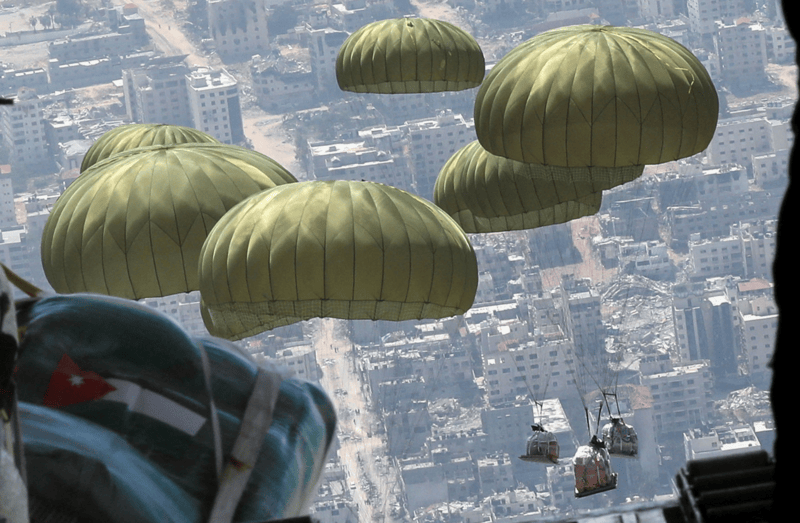 The Jordanian armed forces drop aid parcels over Gaza last April. Despite such relief efforts, some humanitarian groups say the level of hunger there has reached famine proportions. REUTERS/Alaa Al Sukhni
The Jordanian armed forces drop aid parcels over Gaza last April. Despite such relief efforts, some humanitarian groups say the level of hunger there has reached famine proportions. REUTERS/Alaa Al Sukhni
Since December 2023, the IPC has repeatedly found that the territory’s proportion of people experiencing an extreme lack of food is the highest it has seen anywhere in the world.
Israeli authorities continue to maintain a tight hold on what goes into Gaza. A Reuters analysis of past relief shipments suggests that outside pressure may have made some difference. At several key moments when the U.S. or other powerful actors raised urgent concerns about food access in Gaza, Israel allowed more goods to enter the territory, Reuters found. But those increases have always been short-lived and never enough to ease hunger for sustained periods, according to interviews with aid workers and residents of Gaza.
One example: In March, the IPC’s Famine Review Committee, which vets and verifies a famine finding, published an analysis projecting that famine was “imminent” in northern Gaza. The International Court of Justice also ordered Israel to ensure the delivery of aid to Palestinians throughout Gaza. That month, Israeli government figures show, aid into Gaza began to increase.
Then in early April, after Israel killed seven people working for American aid charity World Central Kitchen, U.S. President Joe Biden threatened to condition support for Israel’s offensive in Gaza on Israel taking concrete steps to protect aid workers and civilians. That month, aid to Gaza rose to the highest levels since the war began. It hasn’t reached those levels in any month since.
In a statement, Israeli authorities told Reuters that efforts are made “almost daily” to coordinate time windows where Israeli soldiers “ceasefire in certain areas” to allow movements for aid organizations, medical teams, and humanitarian supplies. “Residents are informed in advance of such pauses,” the statement reads.
 Palestinians climb onto trucks to grab aid delivered into Gaza through a U.S.-built pier in May. REUTERS/Ramadan Abed
Palestinians climb onto trucks to grab aid delivered into Gaza through a U.S.-built pier in May. REUTERS/Ramadan Abed
Even when supplies make it into Gaza, however, looting by armed gangs has thwarted efforts to feed the hungry. Israeli restrictions on movement and the ongoing fighting also mean other aid fails to reach those in need.
On Nov. 7, for instance, Israeli authorities approved a request to send 10 trucks of food and one truck of water from Gaza City to areas in northern Gaza that had received no food aid for more than a month, according to the World Food Programme, or WFP, the U.N.’s primary food-aid distributor. While the convoy was held at an Israeli checkpoint for two hours, desperate civilians took some of the aid, a WFP spokesperson told Reuters.
The convoy was then allowed to move. But after a few kilometres, Israeli soldiers ordered the drivers to unload the trucks, leaving the aid on the ground near the checkpoint in north Gaza. A WFP spokesperson said staff members were told it wasn’t safe to proceed and to abandon the aid.
According to the WFP, the aid never reached its destination: schools where displaced people were sheltering and a hospital. The WFP spokesperson said it would have been impossible for civilians to approach the area where the aid was unloaded because of the presence of the Israeli military.
Around that time, Israel’s military released a statement about the incident. It said that 11 trucks carrying food, water and medicine reached northern Gaza. It also published a video and photos, showing aid workers leaving the aid on the side of the road. The statement did not mention that the aid failed to reach its intended destination.
COGAT, the Israeli government body that is responsible for aid to Gaza, did not respond to Reuters questions about the incident. A spokesperson for the Israel Defense Forces had no comment.
In a June report on Gaza, the IPC’s Famine Review Committee wrote that increases in aid were one reason the famine they had predicted in March likely didn’t happen. Jeremy Konyndyk, president of the group Refugees International, said he believes Israel allowed the shipments because it wanted to avoid being seen as responsible for a famine finding.
“A formal famine determination would signal a historically grave calamity brought about by the military tactics of the Israeli state,” said Konyndyk, the former director of the U.S. Agency for International Development’s Office of U.S. Foreign Disaster Assistance. “That word – famine – has a lot of power … It takes it from a technical determination to a historical judgment. And that, of course, was not a historical judgment that the Israeli government wanted to be held responsible for.”
COGAT did not respond to questions about whether Israel allowed more aid into Gaza to prevent a famine determination, or whether outside pressure influenced Israel to temporarily loosen restrictions.
An IPC famine finding could be used in legal cases against Israel or its officials, some experts say.
In November, the International Criminal Court in The Hague issued arrest warrants for Israeli Prime Minister Benjamin Netanyahu and his former defense chief. One of the war crimes that’s alleged: starvation as a method of warfare. Starvation is also at the crux of South Africa’s case accusing Israel of state-led genocide. That case is before the International Court of Justice, the U.N.’s highest legal body.
Although a famine finding would not be necessary to prove criminal liability, “it would emphasize the extreme urgency of changing Israel’s behaviour,” said Tom Dannenbaum, associate professor of international law at Tufts University’s Fletcher School of Law and Diplomacy.
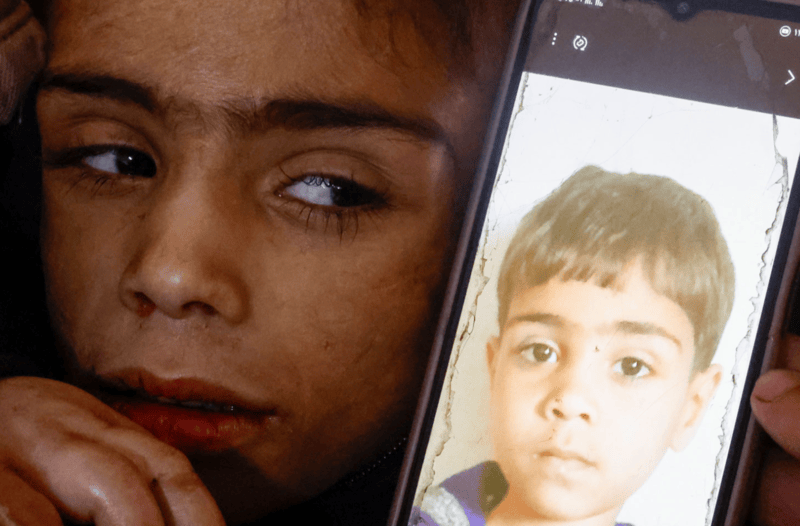 Palestinian boy Mu'ath Mohamed Abu-Hagag recently was diagnosed as malnourished by doctors at Nasser Hospital in Khan Younis. He looks on as his mother displays a picture of him taken when he was healthy. REUTERS/Mohammed Salem
Palestinian boy Mu'ath Mohamed Abu-Hagag recently was diagnosed as malnourished by doctors at Nasser Hospital in Khan Younis. He looks on as his mother displays a picture of him taken when he was healthy. REUTERS/Mohammed Salem
Some experts told Reuters that a famine determination by the IPC would make little difference in terms of mobilising assistance to Gaza. The issue is whether Israel will “lift restrictions on access and ensure humanitarian organizations can deliver aid safely,” said Alexandra Saieh, head of humanitarian policy and advocacy at Save the Children. The aid group is one of 19 organizations and intergovernmental institutions that oversee the IPC.
‘Truly Terrible’
As the IPC examines its own criteria, some experts suggest it should broaden its methods and its mindset.
The IPC typically gets much of its information from aid workers who go from household to household to glean key data on acute malnutrition and death rates. In Gaza and other conflict zones, violence and repeated displacements make such surveys difficult. The consequence: Famine can be missed or discovered too late.
The IPC famine thresholds require specific assessments: of mortality, of the percentage of households facing an extreme lack of food, and of the percentage of malnourished children. But some food-security experts say the IPC’s standards, part of an evidence-driven system designed to objectively classify acute food insecurity, need to be revised and shouldn’t be the only determinant of famine.
Ainashe, the analyst with relief group CARE, said the IPC should change its approach in besieged areas. The monitor, he said, should accept not just numerical data for some of the thresholds it uses to determine famine.
For instance, he said, the IPC could conclude a famine is occurring when at least 20% of households are suffering from extreme hunger – a threshold it currently adheres to – while also using on-the-ground anecdotal information from doctors, families and aid workers indicating that malnutrition and mortality rates are rising fast. The system, Ainashe said, must “err on the side of saving lives.”
The IPC says it has adapted its methods in locations affected by conflict. One example: It uses information gathered through phone surveys in areas data collectors might be unable to visit, said Lopez, the IPC global program manager. But Lopez warned that lowering the bar on data requirements too much “would put the credibility of the IPC at risk and would likely result in weaker action.”
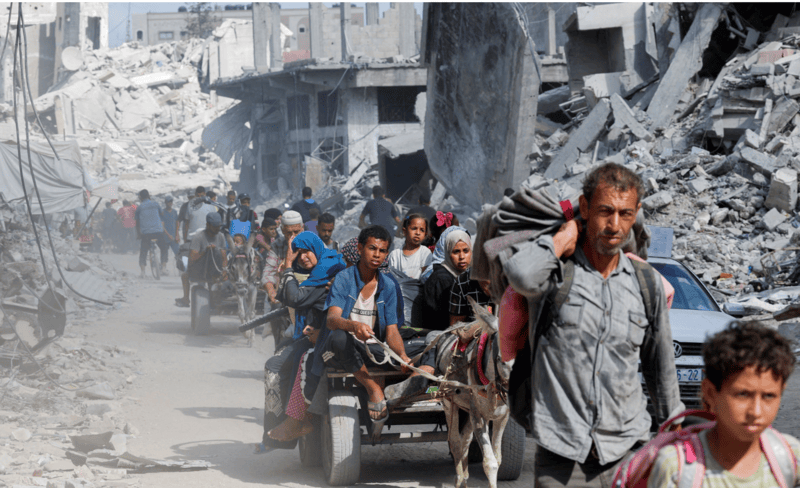 Since the October 7, 2023 attacks, Palestinians have moved about Gaza seeking food and shelter. REUTERS/Mohammed Salem
Since the October 7, 2023 attacks, Palestinians have moved about Gaza seeking food and shelter. REUTERS/Mohammed Salem
Some experts believe the IPC should explore how to expand its use of satellite imagery and other tools so it could track everything from displacement patterns to crop growth or grave sites, as Reuters did in assessing hunger in Sudan. They also say that the IPC system relies too much on statistics and not enough on in-depth interviews with people living through hunger about how they are surviving and their experiences.
“The IPC approach has lost sight of what famine is in the real world,” said Chris Newton, a former IPC analyst who examined issues related to conflict and food security. He is now a visiting fellow at the Feinstein International Center at Tufts University in Boston. “Given the risks of mass death, it needs to find better ways to incorporate every potentially useful piece of information available.”
Shay, the pulmonologist who volunteered in October, said he didn’t need more data to understand what is happening in Gaza.
The pediatric ward at Nasser Hospital averaged about 140 patients each day Shay was there, he said; the ward had 40 beds. Children and their mothers slept on mats in the hallways, and the crowded conditions increased the risk of infections spreading. Many children suffered from dehydration, diarrhea or hepatitis from drinking dirty water. He believes the conditions will only worsen.
“The children are going to be sicker,” Shay said. “More infections will spread.”
According to various methods of measuring hunger that pre-date the IPC system, Gaza is already mired in famine, said Alex de Waal, executive director of the World Peace Foundation at Tufts’ Fletcher School. In a recent essay, de Waal estimated that starvation and related diseases there have claimed at least 10,000 lives. He said his assessment is an approximation, not a tally: He reached the figure by examining a range of death estimates from the territory and reviewing mortality figures in other countries beset by food emergencies similar to those in Gaza.
Just last week, the U.S. government’s own hunger monitor, the Famine Early Warning Systems Network (FEWS NET), published a report that projected famine by early 2025 in part of northern Gaza. After the report was issued, the U.S. ambassador to Israel, Jack Lew, wrote that it relied on data that “is outdated and inaccurate.” Subsequent to Lew’s critique, FEWS NET withdrew the report, stating that its alert is “under further review” and that it expects to update the report in January.
De Waal decried Lew’s comments and said the situation underscores how the dearth of numeric data demands a reliance “on extrapolation, inference, empirical evidence, logic, and expert judgment.” If the U.S. were concerned about the quality of the data, “it would be straightforward to demand that Israel permit international agencies to operate and collect such data,” de Waal said.
Lew’s spokesperson and the U.S. State Department declined to comment.
As for the debates over the exact toll hunger has taken in Gaza, de Waal said they miss a larger point. “We need to dethrone the concept that if it’s not famine, it’s OK,” he said. “Even if it’s not a famine, it can be truly terrible.”
Top Stories Today

